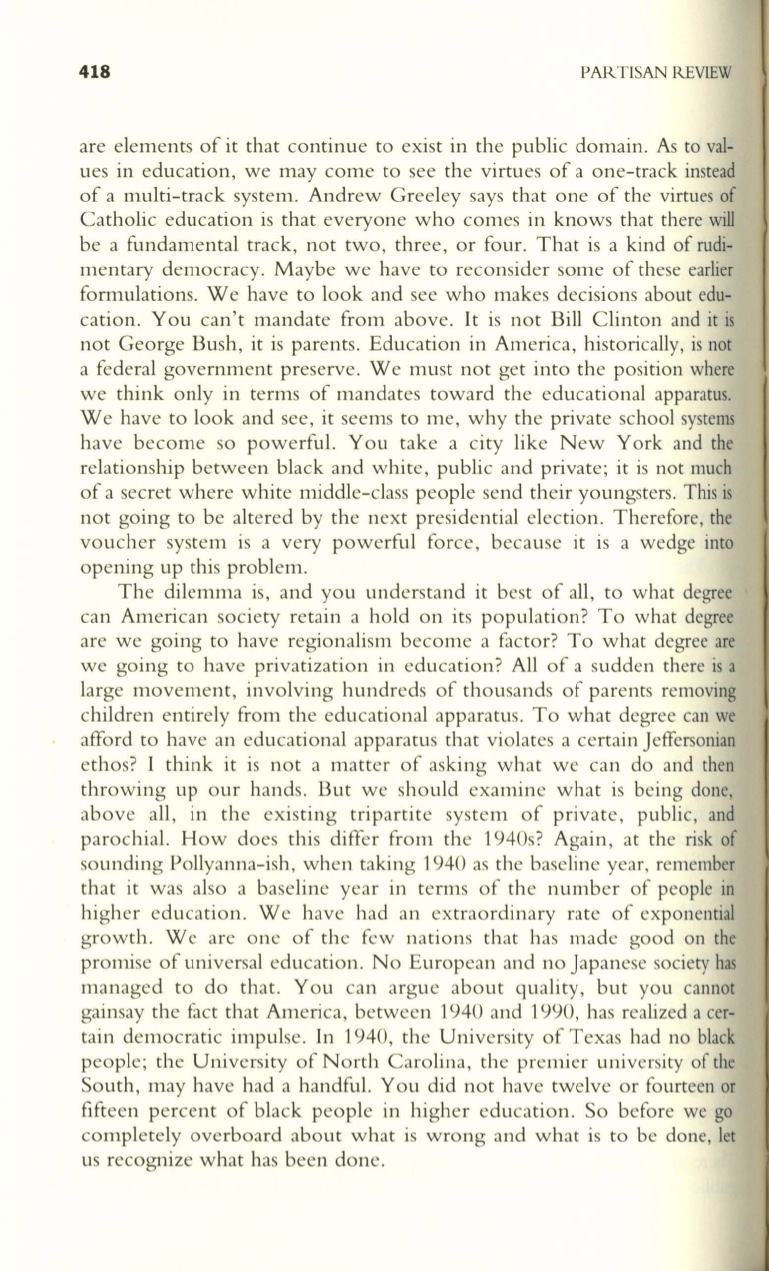
418
PAR.TISAN REVIEW
are elements of it that continue to exist in the public domain. As to val–
ues in education, we may come to see the virtues of a one-track instead
of a multi-track system. Andrew Greeley says that one of the virtues of
Catholic education is that everyone who comes in knows that there will
be a fundamental track, not two, three, or four. That is a kind of rudi–
mentary democracy. Maybe we have to reconsider some of these earlier
formulations. We have to look and see who makes decisions about edu–
cation. You can't mandate from above. It is not Bill Clinton and it is
not George Bush, it is parents. Education in America, historically, is not
a federal government preserve. We must not get into the position where
we think only in terms of mandates toward the educational apparatus.
We have to look and see, it seems to me, why the private school systems
have become so powerful. You take a city like New York and the
relationship between black and white, public and private; it is not much
of a secret where white middle-class people send their youngsters. This is
not going to be altered by the next presidential election. Therefore, the
voucher system is a very powerful force, because it is a wedge into
opening up this problem.
The dilemma is, and you understand it best of all, to what degree
can American society retain a hold on its population? To what degree
are we going to have regionalism become a factor? To what degree are
we going
to
have privatization in education? All of a sudden there is a
large movement, involving hundreds of thousands of parents removing
children entirely from the educational apparatus. To what degree can we
afford to have an educational apparatus that violates a certain Jeffersonian
ethos? I think it is not a matter of asking what we can do and then
throwing up our hands. But we should examine what is being done,
above all, in the existing tripartite system of private, public, and
parochial. How does this differ from the 1940s? Again, at the risk of
sounding Pollyanna-ish, when taking 1940 as the baseline year, remember
that it was also a baseline year in terms of the number of people in
higher education. We have had an extraordinary rate of exponential
growth. Weare one of the few nations that has made good on the
promise of universal education. No European and no Japanese society has
managed to do that. You can argue about quality, but you cannot
gainsay the fact that America, between 1940 and 1990, has realized a cer–
tain democratic impulse. In 1940, the University of Texas had no black
people; the University of North Carolina, the premier university of the
South, may have had a handful. You did not have twelve or fourteen or
fifteen percent of black people in higher education. So before we go
completely overboard about what is wrong and what is to be done, let
us recognize what has been done.


